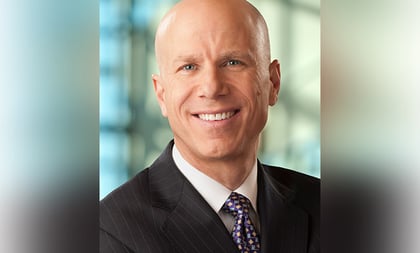Lincoln Financial Network took three years to develop and roll out its new technology platform, AdviceNext 1.0, in partnership with Fidelity Clearing & Custody Solutions. Its next iteration, AdviceNext 2.0, will be shared with the firm’s roughly 8,900 affiliated registered representatives in 2019 and will include automated investing, or robo-advice, technology.
With AdviceNext 1.0, Lincoln advisors work exclusively with Fidelity for clearing and custody services; those working with Pershing Advisor Solutions ended that relationship in September.
To better grasp the thinking behind this technology switch and what it means for Lincoln’s advisors today and over the next few years, ThinkAdvisor spoke with President David Berkowitz on the broker-dealer’s IT transformation.
THINKADVISOR: Can you tell us how your new platform helps advisors?
DAVID BERKOWITZ: We saw how the digital world was fundamentally changing how advice gets delivered. We spent some time with [end] clients understanding what their needs were, and saw that they wanted to be better educated and financially literate, and be engaged in different and new ways through technology.
We also knew that in terms of relationships with advisors, clients want to be more empowered.
[Our] point of view is that the future of advice is built on the intersection of the human-based advice model, augmented and enabled through digital technology. Therefore, we needed to make some significant investments in our operating and technology platform to achieve that vision.
Our strategy is centered around engineering the right digital tools and technology to deliver the objectives I’ve just laid out. It was a lot to build.
It wasn’t just going into the marketplace and buying application software or buying tools and technology, it was about recognizing that to create the right advisor and client experience, the real value is in either building proprietary technology and/or integrating the best-of-breed third-party application software into one integrated seamless platform for the advisor and the client.
We started [by breaking] down an elite advisors’ sales and service cycle. We identified seven core steps: everything that goes into pre-engaging client prospecting, to networking, to pitching that prospective client, to making them a client — [and from there] analyzing a client’s current situation, to designing and developing a strategy for that client, to presenting a solution and alternatives, moving into implementation and then sitting down and conducting a client review.
We asked, “Given that sales and service cycle, how do you deploy digital technology to make sure that experience is as robust as it can be?” That’s how we started identifying all the deliverables for AdviceNext 1.0 and AdviceNext 2.0.
We also recognized, as an organization, that we didn’t need to do everything on our own, so we went out in marketplace and talked to several firms; we wanted a partner to bring our vision to life.
After a significant 18-month RFP process, we chose Fidelity as a partner. Then we embarked on the initiative — laying out all the design and user specifications — and Fidelity and a couple other players worked with us on building it.
What were the steps of the building process?
One of the key deliverables we wanted to offer is called automated account opening (AAO). Whether it’s brokerage business, advisory business or direct-to-manufacturer/check-and-app business, we wanted to build an integrated and automated account-opening capability, which we delivered in November 2017, and it’s up and running.
[But] it’s not just about opening an account. The platform integrates with three best-of-breed customer relationship management, or CRM, systems — we’re using Redtail, Ebix and Salesforce, and we integrated these [systems] with Fidelity into our AdviceNext platform.
This means that data, or client information, moves seamlessly from CRM systems and software all the way through to opening accounts across a broad array of business.
One thing that makes our investment [in technology] unique is that we made it not just for the investment business — such as managed accounts, general securities and mutual funds and the like — we also had a strategy to digitally enhance the insurance business, including life insurance and annuities.
A lot of firms have focused almost exclusively on the wealth accumulation or investment business. But [since] we’re part of Lincoln Financial Group and our advisors are engaged in comprehensive planning, we go deeper and wider than what you might find in a typical broker-dealer.
We also built the AdviceNext Gateway, which is a workstation. When advisors log in, there are 30-35 tiles that appear on the desktop, and the advisors can call up whatever tool or technology they need at their fingertips to conduct a variety of business.
For example, there is the Lincoln Solution Center, and that’s a tile that lets an advisor click instantly and pull up info about a client’s insurance policies, variable annuity or fixed indexed annuity products to see what they sold in addition to seeing AdviceNext Gateway investment portfolios. We also built a retirement plan portal.
Some of that was built by Lincoln, a chunk was built by Fidelity, and another part was built by Envestnet, which we use for our managed account platform.
We were first at the table in terms of design specifications, Fidelity was on a path with Wealthscape, and we worked together in terms of what functionality would be helpful based on our vision.
Why did you launch the new platform?
The primary driving force, as we listened to our end clients, was their changing needs and preferences. We’ve gotten used to having a handheld device for access to anything. The experience for the end user is being transformed in all aspects of their lives.









 March 29, 2018 at 02:32 PM
March 29, 2018 at 02:32 PM











